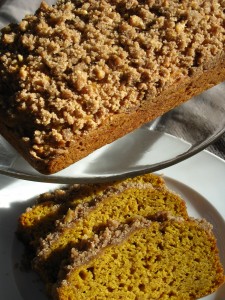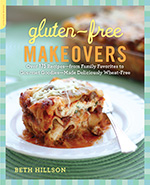As a child, my biggest worries this time of year were whether Mrs. Lord was making caramel corn balls for Halloween and if Mrs. Oakes would have any candy coated apples left by the time I came to her house to trick or treat.
I spent the entire month of October anticipating the Candy Corn, the Tootsie Rolls, and the Mars Bars that would fill my shopping bag – several bags, if I was lucky. As I counted the days until the end of the month, I brooded about the ever cooling weather pattern. Would there be snow in the tiny Maine town I called home? Would I need mittens – something that made it very difficult to eat Mrs. Oakes’ sticky candy apples. Most of all, I wondered how many layers of clothing I would need to wear under my costume. Would the ubiquitous black cat costume still fit or would I have to opt for my brother’s red devil number?
In school, I sketched faces I might want to carve into my jack-’o-lantern. I practiced drawing angry faces, funny ones, sad ones. In the end, the pumpkin always looked the same, owing to my lack of dexterity and the ever-dull knife that was the only one my mother allowed me to use. Each year I promised myself that next year’s pumpkin would be much better. It never
was.
But not once did I realize that all the pumpkins I carved or stole from people’s porches and smashed in the middle of the road were edible, that pumpkin was food. I missed the connection, that these orange orbs were essential to my grandmother’s Thanksgiving pumpkin pie and my mother’s pumpkin quick breads. Pumpkin – – duh?!
I can’t say when the light went off, when I began using pumpkin in baking rather than carving. But one day, it did. And, now it’s the orange flesh that pleases me. Low in calories and high in fiber and vitamins, pumpkin is my friend. And it’s particularly great for gluten-free baking, adding moisture and texture to muffins and quick breads. Warm spices – – cinnamon, ginger, cardamom, cloves, and nutmeg – – pair nicely with pumpkin puree. Although you can bake a pumpkin and remove the flesh, you can also buy canned pumpkin puree. It’s so much easier and just as good.
So, say “Hello” to pumpkin and its many uses, and to this flavorful, moist pumpkin bread with crumb topping I made in honor of the season .
Pumpkin Bread with Crumb Topping
Makes 2 Medium Loaves
½ cup white rice flour
1 cup sorghum flour
1/3 cup cornstarch
2 ½ tablespoons tapioca starch
1 tablespoon baking powder
1 teaspoon xanthan gum
¾ teaspoon salt
½ teaspoon baking soda
½ teaspoon
ground cinnamon
¹⁄8 teaspoon
ground nutmeg
2 large eggs, at room temperature
1½ cups pumpkin puree (most of a 15-ounce can)
1 cup sugar
½ cup vegetable oil
¼ cup chopped pecans or other nuts, optional
1 cup Crumb Topping (below)
Preheat the oven to 350°F. Lightly oil two 8½ x 4½-inch loaf pans.
Combine the flours, cornstarch, tapioca starch, baking powder, xanthan gum, salt, baking soda, cinnamon, and nutmeg in a bowl. In a separate bowl, whisk together the eggs, pumpkin, sugar, and oil. Add to the dry ingredients and whisk to combine. Fold in the pecans, if using.
Divide the batter evenly between the two pans. Sprinkle ½ cup of the crumb topping over each loaf. Bake for 40 to 45 minutes, until toothpick inserted in the center comes away clean. Set on a wire rack and let cool for 10 minutes. Turn the breads out onto the rack and let cool completely. Wrap with plastic and let sit overnight before slicing.
Crumb Topping
Makes 3½ Cups or 3 Cups If Nuts Are Omitted
Store remaining topping in the refrigerator for 3 weeks or freezer for 3 months.
¾ cup rice flour
1 cup packed brown sugar
1 tablespoon ground cinnamon
¼ teaspoon ground nutmeg
¼ teaspoon ground cloves
½ teaspoon salt
½ cup ground pecans, walnuts, or almonds, optional
6 tablespoons unsalted butter or non-dairy buttery spread, at room temperature, cut into pieces
Combine the flour, brown sugar, cinnamon, nutmeg, cloves, salt, and pecans, if using, in a large bowl. Mix well. Add the butter and use your fingertips to mix just until crumbly.
Categories: Recipes | Tags: baking, gluten free, gluten-free makeover, holidays, pumpkin, quick breads | 3 Comments »







 Baking guru,
Baking guru,
Alaine says:
January 25, 2012 at 9:54 am /
Yum!! This pumpkin bread looks great. I know it is no longer exactly the fall/pumpkin season, but I have been craving some. Thank you!
Patricia Barile says:
June 15, 2012 at 1:09 pm /
Hi, I don’t know if this is the place to ask my question but if not, maybe you can direct me to one. Thanks.
This is the second time I have tried to make a gluten free pasta salad. Both times the pasta became chewy, tough and dry after I cooled it overnight in the fridge. The first time I made a pesto salad and I thought maybe I had not cooked the pasta long enough. This time I am sure I cooked it enough since it was very tender and soft when I took it out of the boiling water. I put a little bit of olive oil on it to keep it from sticking together while I cooled it in the fridge overnight. When I took it out of the fridge the next morning in order to put the ingredients on it, it was the same thing- tough, chewy and dry. Help! I want to be able to make gluten free pasta salads during the summer. Any ideas or suggestions?
Beth Hillson says:
June 17, 2012 at 9:31 am /
Hi Patricia,
It’s not you; it’s our gluten-free pasta! Take a look at my blog entry “Pasta-bilities” http://glutenfreemakeovers.com/2012/05/quinoa-pasta-salad/
There are a few suggestions there. Bottom line: Pasta does not keep well overnight in the refrigerator. I am not sure if you are using brown rice pasta or corn pasta, but brown rice beceomes very brittle and dry. The only way to reconstitute it is to sprinkle a little water over the top and microwave it. That’s not going to work for a salad, however. I have better luck with corn pasta. Even dressed salads will be pretty tasty when stored overnight. If you are planning to make everything a day ahead, I recommend storing the mix-ins and dressing separately and adding just before serving. If you make up the salad completely including tossing it with dressing, any gluten-free pasta will absorb the moisture.